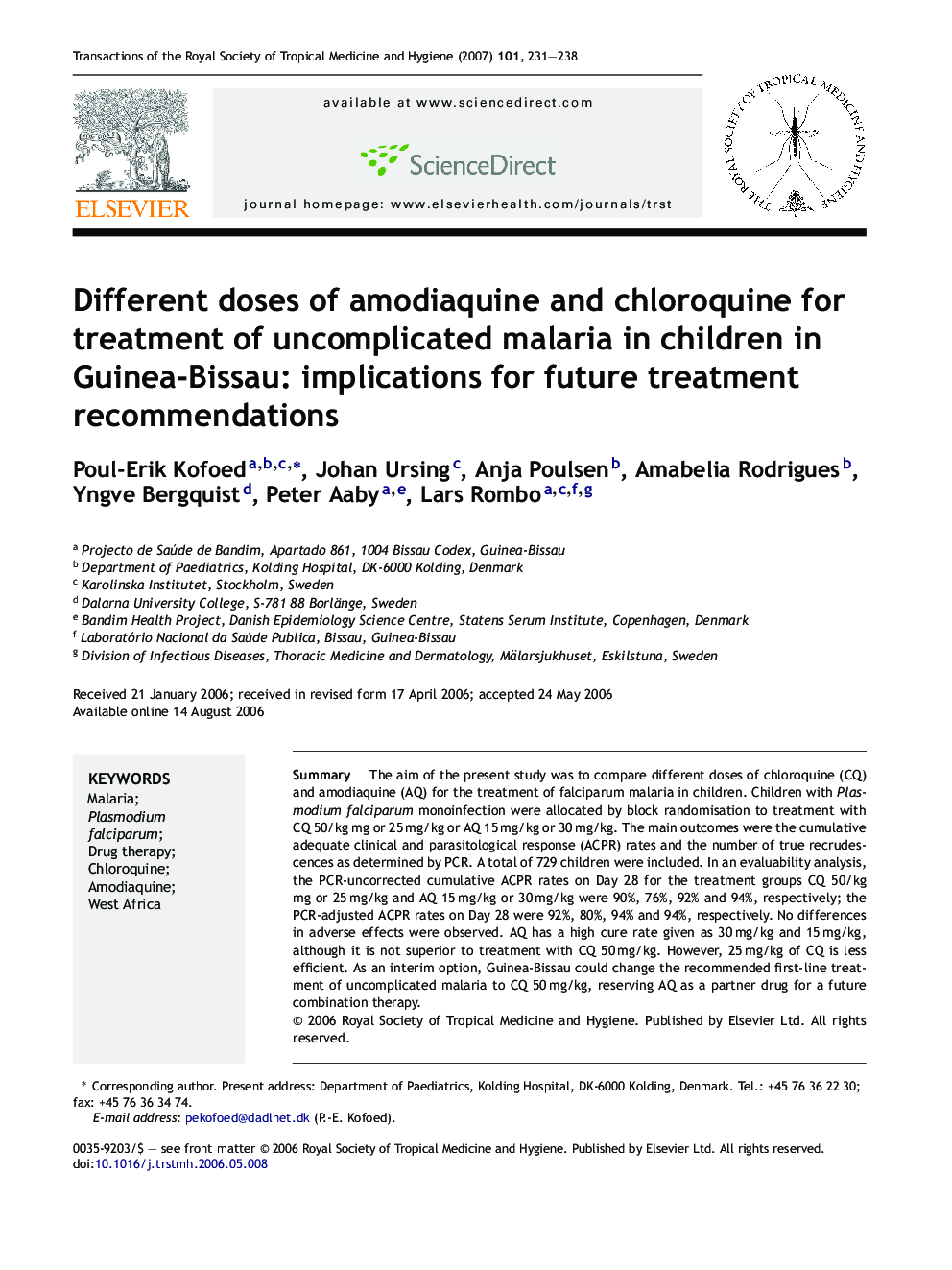| Article ID | Journal | Published Year | Pages | File Type |
|---|---|---|---|---|
| 3421011 | Transactions of the Royal Society of Tropical Medicine and Hygiene | 2007 | 8 Pages |
Abstract
The aim of the present study was to compare different doses of chloroquine (CQ) and amodiaquine (AQ) for the treatment of falciparum malaria in children. Children with Plasmodium falciparum monoinfection were allocated by block randomisation to treatment with CQ 50/kg mg or 25Â mg/kg or AQ 15Â mg/kg or 30Â mg/kg. The main outcomes were the cumulative adequate clinical and parasitological response (ACPR) rates and the number of true recrudescences as determined by PCR. A total of 729 children were included. In an evaluability analysis, the PCR-uncorrected cumulative ACPR rates on Day 28 for the treatment groups CQ 50/kg mg or 25Â mg/kg and AQ 15Â mg/kg or 30Â mg/kg were 90%, 76%, 92% and 94%, respectively; the PCR-adjusted ACPR rates on Day 28 were 92%, 80%, 94% and 94%, respectively. No differences in adverse effects were observed. AQ has a high cure rate given as 30Â mg/kg and 15Â mg/kg, although it is not superior to treatment with CQ 50Â mg/kg. However, 25Â mg/kg of CQ is less efficient. As an interim option, Guinea-Bissau could change the recommended first-line treatment of uncomplicated malaria to CQ 50Â mg/kg, reserving AQ as a partner drug for a future combination therapy.
Related Topics
Life Sciences
Immunology and Microbiology
Applied Microbiology and Biotechnology
Authors
Poul-Erik Kofoed, Johan Ursing, Anja Poulsen, Amabelia Rodrigues, Yngve Bergquist, Peter Aaby, Lars Rombo,
